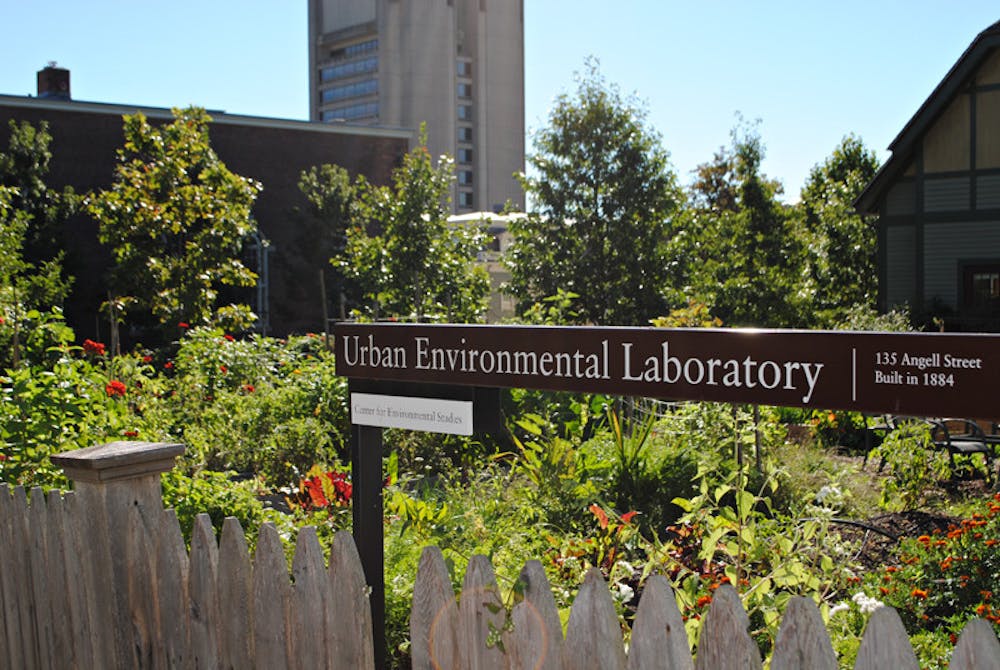On Feb. 20, the University announced plans to change the proposed location of its new performing arts center “to a smaller plot on The Walk between Angell and Olive streets, facing the Granoff Center for the Creative Arts.” The choice of the original site would have resulted in the demolition of four historic buildings that are central to campus life, including the beloved Urban Environmental Lab, a storied building that houses the environmental studies program, the Native American and Indigenous Studies at Brown initiative and a variety of student organizations. Following sustained criticism from students, faculty members and Providence city residents, the University has wisely decided to shift course.
We support the University’s decision to respond to community feedback and compromise on the performing arts center’s location. While efforts to enhance the spaces available to students and practitioners of the arts at Brown are certainly welcome, they should not be pursued at the expense of infrastructure with historical and educational significance to many members of the community. The revised plan successfully reconciles the need for new arts facilities with demands for the preservation of existing structures. The new location renders the proposed demolitions unnecessary and allows more of the structure to be built underground, a move that is expected to alleviate traffic congestion and parking pressures.
Just as importantly, we applaud all the activists — on- and off-campus — who mobilized community action around issues of sustainability and historical preservation on College Hill, initiated important conversations about Brown’s footprint in the wider community and proved that committed individuals can hold powerful entities accountable.
Resistance to the original construction plans emerged almost immediately after they were first unveiled. Last year, students seeking to preserve the UEL circulated a petition that garnered over 300 signatures and organized outreach efforts on social media. And according to last spring’s undergraduate Herald poll, 39.8 percent of students opposed the site of the new performing arts center, while only 26 percent supported it.
Professors, too, were vocal about the costs of the UEL’s removal to environmental education at Brown. Originally a carriage house when it was erected in 1885, the UEL was later renovated by students in 1979 to “showcase the maximum of what can be done in an urban environment.”
Public opposition from Providence locals fully crystallized in the last few months. Earlier this year, the University asked the Providence City Plan Commission to delay a vote on the construction from Jan. 16 to March 20. Though Russell Carey ’91 MA’06, the University’s executive vice president for planning and policy, did not guarantee any changes to the original plans, he did acknowledge that “it was clear that the proposal was not ready to be acted on at (the Jan. 16) meeting.” Representatives of the Providence Preservation Society — which placed the four buildings at risk of demolition on its “2018 Most Endangered Properties List” — argued that the new performing arts center could be built in other places without necessitating the elimination of historic buildings. Comments solicited from the public also revealed concerns about the original site’s effects on parking and traffic.
Taken together, the University’s eventual accommodation of community input and activists’ steadfast defense of community institutions underscore the enduring power of grassroots movements. A few weeks ago, it would have been easy to write off the UEL as a lost cause — a building irreversibly condemned to erasure. Yet, in sustaining their resistance despite the odds, today’s community activists once again have done an invaluable service to the University, advancing a legacy of informed, inclusive action that will enrich life at Brown and protect the historical vibrancy of College Hill for generations to come. As one student told The Herald last week, “This change is really about having a community survive and history maintained.”
Editorials are written by The Herald’s editorial page board: Anuj Krishnamurthy ’19, Mili Mitra ’18, Rhaime Kim ’ 20 and Grace Layer ’20. Please send responses to this opinion to letters@browndailyherald.com and op-eds to opinions@browndailyherald.com.





